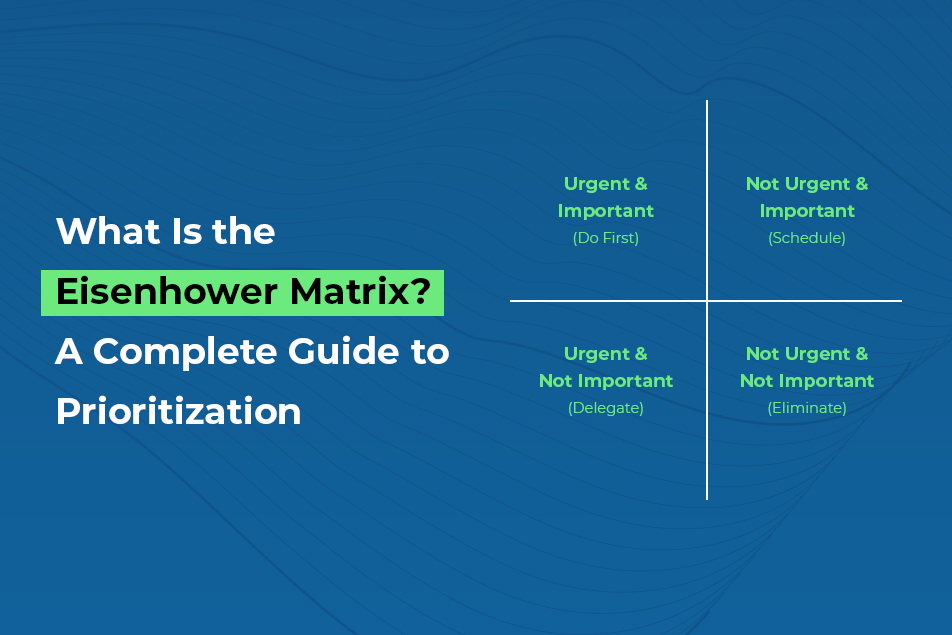Project managers often face many challenges during the life of a project. One of the biggest hurdles is dealing with limited resources. These restrictions can include time, money, people, tools, or materials. When these are not enough, the project can slow down or even fail. That’s why understanding resource constraints is so important.
A resource constraint means you don’t have as much of something as you need to complete the job. It could be a tight budget, not enough skilled workers, or a short deadline. These limits affect how well and how fast a team can work.
Project managers must know how to spot these problems early. If they don’t, the whole project might suffer delays or cost more than planned. In this blog, we’ll explore what resource constraints are, the types that exist, and how to manage them. This guide will help project managers stay in control and make smart decisions when faced with limitations.
What Are Resource Constraints?
Resource constraints are limits or shortages that make it harder for project managers to complete their work on time, within budget, and to the expected quality. These constraints can affect the team, timeline, costs, or even the tools and materials needed to complete tasks. In simple words, a resource constraint happens when you don’t have enough of something important to get the job done right.
Every project, no matter how big or small, runs into some type of constraint. These limitations can slow down progress, increase expenses, or lower the final quality of work. That’s why project managers need to understand them clearly and plan ahead.
Let’s take a closer look at some common examples of resource constraints.
Examples of Common Resource Constraints
Limited budget: When there’s not enough money to pay for tools, people, or materials.
Short deadlines: Projects that must be completed quickly can face time constraints.
Lack of skilled staff: Not having the right people with the right skills for the tasks.
Limited equipment or tools: When the tools needed are not available or shared between teams.
Poor access to materials: Waiting for supplies or materials that delay the project.
These challenges often happen together. For example, if you don’t have enough workers, tasks take longer, and delays cost more money. So it’s important to manage all these parts carefully.
The 4 Types of Resource Constraints
Project managers usually deal with four main types of resource constraints. Each one plays a big role in the success or failure of a project.
1. Time
Time is one of the most common and toughest constraints. Every project has a deadline. When the time is too short, teams may rush or skip important steps. This can lead to poor results or missed goals. Delays also create extra pressure, especially if other tasks depend on this one.
2. Cost
Money is always limited in a project. Cost constraints mean the budget must cover everything—salaries, tools, materials, and more. If spending is not tracked well, the project might run out of funds before it finishes. That’s why cost planning and budget tracking are so important.
3. Resources
In project management, “resources” usually refer to people, equipment, or materials. If the project doesn’t have enough of these at the right time, work can stop. For example, a team might need a software license or a machine that’s in use elsewhere. Sharing or waiting for resources creates big risks.
4. Quality
Quality means how good the final result is. When other resources are limited, quality may suffer. For example, if a project must finish quickly, the team might skip tests or use cheaper materials. The end product might not meet the standards. This leads to unhappy clients or rework, which costs more time and money.

How To Identify Resource Constraints
Identifying resource constraints is one of the most important tasks a project manager must do—especially at the beginning of the project and at key points during its life cycle. If you don’t recognize these limitations early, they can lead to missed deadlines, extra costs, reduced quality, and frustrated team members. Thankfully, there are several smart ways to spot them.
Let’s go through them in more detail:
1. Review the Project Scope and Requirements Carefully
Before any work begins, it’s essential to study the project scope and client requirements. The scope outlines what the project should deliver, how it will be done, and by when. When reviewing it, ask these questions:
Are the goals realistic with the current budget and timeline?
Does the project demand specialized tools or skills?
Do you have access to all the required materials and manpower?
If the answer to any of these is no, there may be a resource constraint. For example, a tight deadline with limited team members means a time and manpower issue. Being honest about the project’s needs and what’s actually available helps set the right expectations early.
2. Monitor Time and Workload Closely
One of the most visible signs of resource constraints is poor time management. When tasks consistently take longer than expected or team members seem overwhelmed, there’s a problem.
Keep track of:
Missed or delayed milestones
Overtime work becoming normal
Frequent task rescheduling
For instance, if one developer is juggling three projects at once, and all of them start running late, this is a clear signal of a human resource constraint. Tools like Gantt charts and time tracking software can help monitor these issues in real time.
3. Compare the Budget with Actual Spending
Another critical step is to constantly compare the project’s budget against what’s being spent. Many resource issues are tied directly to cost. When the money runs low, it limits your ability to hire people, buy equipment, or even complete tasks on time.
Here’s what to look for:
Are you spending faster than planned?
Are vendors charging more than expected?
Are you cutting costs in areas like quality or testing?
For example, you may be forced to skip a round of testing due to lack of funds. This is not just a budget issue but a quality constraint too. Budget overruns often trigger a domino effect that impacts many parts of a project.
4. Analyze Resource Availability and Allocation
It’s important to have a clear view of all the resources—people, tools, and materials—that will be needed throughout the project. You also need to see who or what else is using them. When resources are overbooked or unavailable, it creates bottlenecks.
Look for:
Employees assigned to multiple projects at once
Equipment that is scheduled for other teams
Delays in acquiring needed tools or supplies
Let’s say your marketing team needs design work, but the only graphic designer is fully booked for another task. That’s a resource constraint in staffing. Having a shared resource calendar can help avoid double-booking and uncover future gaps.
5. Hold Regular Team Check-ins and Gather Feedback
Your team members are the best source of information when it comes to real-time resource issues. They experience delays, confusion, or missing tools firsthand. Schedule frequent check-ins and create a safe space for them to share concerns.
Ask questions like:
Are any tasks blocked or delayed?
Do you have everything you need to do your job well?
Is the workload fair and manageable?
If you hear repeated complaints about tools not working or tasks piling up, this is a warning sign. It shows either a shortage of tools, a lack of automation, or that tasks aren’t being shared properly.
6. Use Project Management Tools to Track Data
Digital project management tool like Corexta allow you to track progress, assign resources, and monitor performance all in one place. These tools often offer visual dashboards that highlight problems quickly.
With these platforms, you can:
See who is overloaded with work
Watch budget use in real-time
Track delays and overdue tasks
Spot trends that show increasing risk
For example, if the same resource is tagged as “at capacity” across multiple weeks, that signals a consistent constraint that needs to be fixed.
7. Watch for Declines in Quality or Performance
One of the most overlooked signs of a resource constraint is a sudden drop in quality. This could mean errors in code, poor design, low customer satisfaction, or missed requirements. Often, this is not because the team lacks skill—but because they lack time, tools, or support.
Warning signs include:
Increased mistakes or rework
Missing quality checks or rushed testing
Declining team morale or burnout
These issues can tie back to time, cost, or even human resource constraints. If the team is moving too fast to meet a tight deadline, the final product will likely suffer.

6 Resource Constraint Solutions
Once you’ve identified resource constraints in a project, the next step is to solve them effectively. While every project is different, many common challenges can be handled using proven methods. The key is to manage resources smartly—without stretching your team too thin or sacrificing the quality of the final product.
Here are six detailed solutions that project managers can use to overcome resource constraints and keep projects on track:
1. Templates: Save Time and Standardize Work
Templates are powerful tools that help save time, reduce mistakes, and maintain consistency across projects. When project managers create templates for planning, reporting, documentation, budgeting, and scheduling, it cuts down the time needed to start from scratch every time.
How templates solve constraints:
Saves time: Instead of creating plans, emails, or task lists from zero, teams can quickly fill in templates.
Reduces errors: Templates use proven formats, so there’s less risk of missing key steps or data.
Boosts productivity: When teams follow a clear layout, they can focus on work instead of figuring out what to do next.
Examples of useful project templates:
Project charter template
Risk management template
Resource allocation template
Weekly progress report template
Budget tracker spreadsheet
By using templates, you free up time and effort that can be used on more critical tasks, helping to reduce both time and manpower constraints.
2. Scheduling: Optimize Time and Resource Allocation
One of the best ways to deal with time and manpower constraints is to build a smart and realistic project schedule. Scheduling is not just about setting dates—it’s about understanding which tasks depend on each other and assigning the right people at the right time.
How scheduling solves constraints:
Improves planning: It helps you see when resources are needed and whether they’re available.
Prevents overload: Smart schedules spread out tasks so no one is overwhelmed.
Boosts visibility: Everyone knows what to do, when to do it, and how their work fits into the bigger picture.
Key tools and techniques:
Gantt charts to visualize timelines
Resource calendars to avoid double-booking
Milestone tracking to measure progress
Critical path method (CPM) to identify key tasks that affect the deadline
A well-built schedule makes it easier to adjust when something goes wrong and ensures that every team member is being used effectively—helping to reduce both time and resource constraints.
3. Delegation: Share Work and Empower the Team
Delegation means assigning the right tasks to the right people based on their skills and workload. Many project managers try to handle too much themselves, which slows things down. By delegating properly, you can boost team efficiency and reduce the pressure on limited resources.
How delegation solves constraints:
Increases productivity: Spreads the work more evenly across the team.
Builds trust: Team members feel valued when given responsibilities.
Develops skills: Helps staff grow by giving them chances to handle new tasks.
Delegation tips for success:
Match tasks with skills—not just availability
Be clear about goals, deadlines, and expected outcomes
Give the right amount of support and autonomy
Follow up regularly without micromanaging
Delegating effectively means your top talent isn’t overworked, and less experienced team members get a chance to learn and grow—reducing time, cost, and people-based constraints.
4. Estimation: Forecast Resources and Prevent Surprises
Poor estimation is one of the biggest causes of project delays and budget overruns. When time or costs are guessed without real data, the whole project can suffer. Accurate estimation helps managers plan the right amount of resources from the start and avoid nasty surprises later.
How estimation solves constraints:
Avoids underplanning: Ensures enough time and budget are set aside.
Supports realistic schedules: Tasks aren’t rushed or underestimated.
Improves resource planning: Helps assign the right number of people or tools.
Common estimation techniques:
Analogous Estimating: Using past projects as a guide
Parametric Estimating: Using data and formulas (e.g., cost per unit or time per task)
Three-Point Estimating: Considering best-case, worst-case, and most likely scenarios
Bottom-Up Estimating: Estimating each small task and adding them up for a total
When estimation is based on data—not guesses—it helps prevent resource shortages and supports better decision-making.
5. Automation: Use Technology to Reduce Manual Effort
In today’s fast-moving world, automation is a game-changer. By using tools to automate repetitive or routine tasks, teams can focus on more valuable work. Automation saves time, reduces errors, and speeds up workflows—all critical when resources are limited.
How automation solves constraints:
Saves labor: Frees up human resources for high-value tasks.
Boosts accuracy: Reduces the risk of human error.
Improves speed: Tasks like reporting or communication happen faster.
Areas where automation helps:
Task assignment and reminders
Budget tracking and reporting
File sharing and document management
Communication via automated emails or status updates
Time tracking or invoicing
For example, using a tool like Zapier can connect apps and automate workflows, while project tool like Corexta can send reminders or updates without manual input. These improvements help ease time, manpower, and even cost constraints.
6. Outsourcing: Bring in External Help When Needed
Sometimes the best way to solve a constraint is to look outside the organization. Outsourcing means hiring external teams, freelancers, or vendors to handle parts of the project. This is especially useful when a project requires skills or tools your team doesn’t have.
How outsourcing solves constraints:
Fills skill gaps: Experts can handle specialized tasks faster and better.
Saves costs: Hiring a freelancer for a short-term task can be cheaper than training or hiring a full-time employee.
Adds flexibility: Scales up or down as the project needs change.
Tasks commonly outsourced:
Software development or coding
Graphic design or video editing
Market research
Content writing
IT support or maintenance
Outsourcing is a great way to manage resource shortages without overloading your core team. It also allows you to meet deadlines and quality standards, even when internal resources are limited.
Solving resource constraints requires a smart mix of strategy, planning, and tools. Templates streamline repetitive work. Scheduling ensures everyone knows their tasks. Delegation spreads the load. Estimation improves planning. Automation boosts speed and accuracy. Outsourcing fills gaps when you need extra support. By combining these six solutions, project managers can overcome constraints and keep projects moving forward smoothly and efficiently.
Do It All With Corexta
Project planning tools are key to managing resource constraints. These limits can slow timelines, raise costs, and hurt quality. By spotting and handling resource constraints early, using the right strategies and tools, and learning from past projects, project managers can overcome these limits and get the best results.











